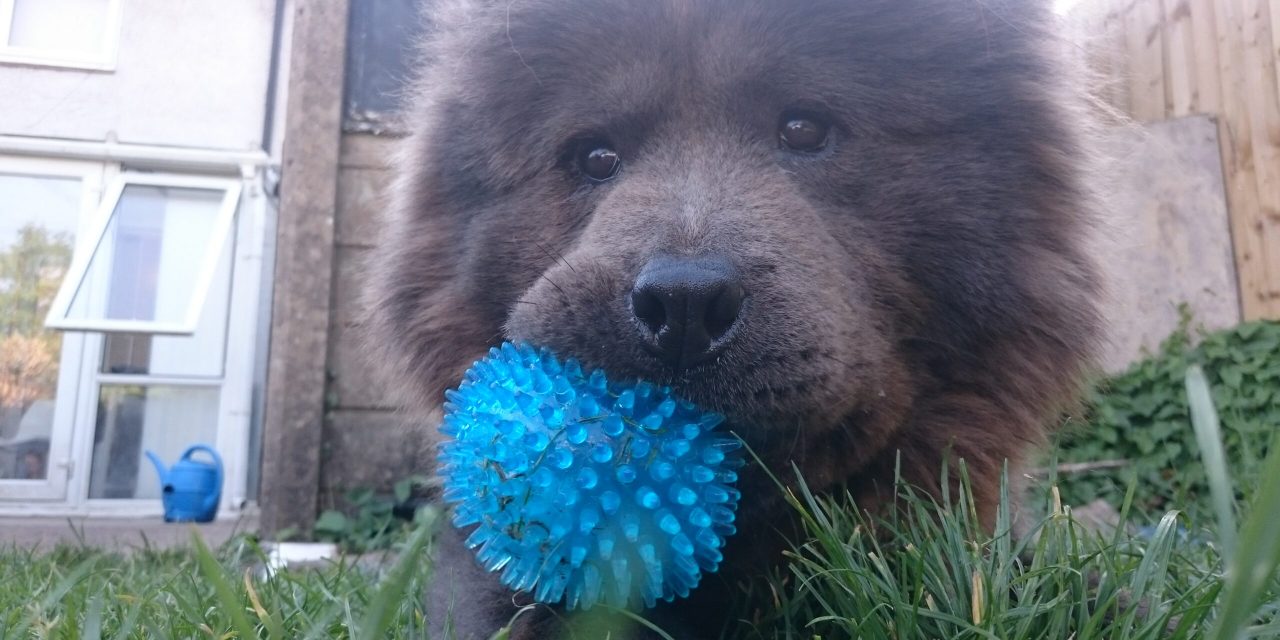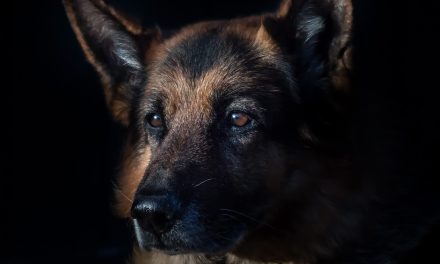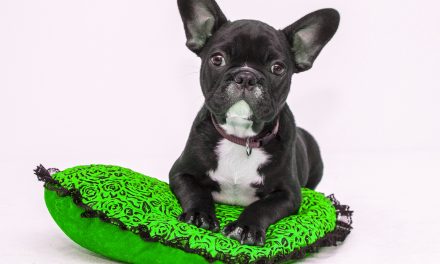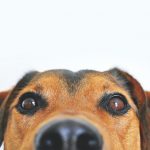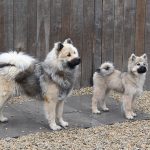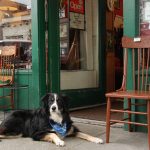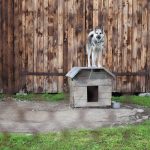- Home
- /
- Dog Breeds
- /
- Chow Chow Breed Profile
The Chow Chow breed is considered to be one of the oldest dog breeds in existence; they are well known for being independent and are the perfect example of loyalty, dignity, and beauty. If you like an independent dog, this is the dog for you. One of the things that set the Chow Chow apart from any other dog breed is its unique blue-black tongue, and people are always fascinated by it.
They are also a very intelligent breed, with a very independent cat-like spirit; they also display a very dignified demeanor and carry themselves very proudly. The Chow is exceptionally aloof; they can be very stubborn and strong-willed, so they need a firm owner who will be able to control their dominant side. Chows are not suited to everyone; they can be quite a handful when they want to be.
A well-bred and well-socialized Chow Chow makes for an excellent family dog. A poorly bred unsocialised Chow Chow is a disaster, especially in the hands of someone new to the breed. Chow Chow dogs have a strong, broad, medium-sized frame covered in a dense double coat; their coat can be rough or smooth. If, like us, you love the look of a Chow Chow, their unique appearance and independent spirit, you’ll have a fiercely loyal life companion.
What to expect from our article
Independent Chow Chow
Chow Chows are devoted to their owners; they are very protective of their owners and their property, which is why they make good guard dogs. Chows do not need much exercise; on average, they require about 45 minutes to an hour per day. Because they are an independent breed, they do not require lots of attention like other dogs and are quite happy to do their own thing most of the time. Although they are very affectionate and loving towards their owners, they can be quite standoffish to strangers.
Chow Chow Health
Like all breeds, chow chows are prone to inheriting some health conditions, such as hip and elbow dysplasia and eye diseases like entropion. Some Chow Chows may be faced with these health issues right from the beginning due to bad breeding, and they can even develop these conditions later on during their lives; the majority of Chow Chows are healthy dogs. Finding a responsible breeder who cares about their Chow Chow health. If you want to own a Chow researching the breed is recommended to know about the health issues you may face within the breed.
Hip dysplasia
Hip Dysplasia is a condition where the hip and leg sockets do not align correctly, leading to the joint rubbing and grinding instead of sliding smoothly within the joint. This rubbing and grinding can cause your dog immense pain and even limit their mobility, meaning your new puppy will have problems walking, running, and jumping. This condition is common with giant and large-breed dogs like German Shepherds, Labradors, and golden retrievers: Saint Bernard’s and Great Danes. Smaller breeds can also be affected, but they rarely show signs of it.
Hip dysplasia usually occurs when your dog is a puppy and not fully developed. Symptoms can become apparent at around four months of age; it can also happen later on in life due to osteoarthritis; osteoarthritis can inflame the joints causing the joint and cartilage to deteriorate, developing into hip dysplasia.
Elbow Dysplasia
Elbow Dysplasia occurs in the joints of the front legs; the condition is characterised by a series of four abnormalities developing in the joint leading to a malformation and deterioration of the elbow joint; it is caused by the abnormal growth of cells, tissue, or bone. Elbow dysplasia can cause lameness in your dog, but it can be treated through medication, and in more severe cases, your dog can undergo surgery.
Like hip dysplasia, it also affects large and giant-breed dogs like Labradors, Retrievers, Rottweilers, German shepherds, Bernese mountain dogs, chow chows, and Newfoundland’s. Elbow Dysplasia is usually apparent by around four months. Still, by ten months, your dog would be showing significant signs of the disease, and a diagnosis is generally being made between four and eighteen months of age.
Symptoms and types
Symptoms will depend on the deterioration, inflammation, and the period that your puppy or dog has had the disease.
- Decreased level of activity
- Difficulty getting up
- Reluctant to run, jump, or climb stairs
- Intermittent or persistent lameness, which can be worse after exercise
- Bunny hopping or a swaying gait
- Legs unnaturally close together
- Pain in hip and elbow joints
- Grinding and rubbing detected with joint movement
- Decreased range of motion within the hip joints
- Loss of muscle mass in the thigh muscles
- Avoiding putting weight on its hips, leading to extra work for the shoulder muscles showing visible enlargement of these muscles
Causes
The development and the progression of hip and elbow dysplasia can be due to both genetic and environmental factors, history of hip elbow dysplasia in the parents, lousy breeding, and even over-exercising your dog.
Diagnosis
Your vet will perform a complete physical exam on your puppy or dog, including X-rays. Your vet will also need a thorough history of your dog’s health, the onset of any symptoms, and any accidents or injuries that may have contributed to your dog’s symptoms. Any information you can provide on your dog’s parentage can be helpful as this may be caused by genetics.
Entropion
Entropion is when the edges of the eyelid roll inward, causing the eyelashes to rub against the eye, which causes watery eyes; untreated, it can lead to ulcers and even blindness. It is an inherited disorder that usually occurs in young puppies, but it can also happen later in life.
Entropion usually affects the lower eyelids more than the upper eyelids, but it can occur in both the upper and lower; it is uncommon to affect just one eye. Breeds vulnerable to Entropion include Labradors, Chow Chows, English Bulldogs, St. Bernard’s, Great Dane’s, and the Sharpei typically showing with dogs with a more squishy face. Entropion can also occur in older dogs as a result of eye disease.
Symptoms of Entropion
The main symptom of Entropion is an inward rolling of the eyelid. The affected eyelid will be wet around the edges. Your dog may squint excessively and may rub his eyes frequently; they can also secrete a thick, mucousy eye discharge.
Diagnosing Entropion
Your vet will diagnose Entropion via a physical exam. The eyelids will be visibly rolled under, revealing ingrown eyelashes or abnormal hair growth on the eye. Your vet will also check the eye for ulcers.
Treating Entropion
If your dog develops Entropion, he/she may need surgery to treat it. It is not advised to have surgery before your dog is one year old; as they develop and grow, they may outgrow the Entropion; they can, however, have a tacking procedure carried out. Make sure your vet specialises in treating Entropion or ask to be referred to a specialist as it is easy to take too much or too little skin away during the surgery resulting in further operations.
Chow Chow Breed Standard
A Breed Standard is a list of guidelines that were put in place to describe the preferred temperament, characteristics, and also the appearance of a specific breed of dog.
Appearance
Active compact, short-coupled and virtually well balanced, leonine in appearance, proud, dignified bearing; well-knit frame; tail carried well over the back.
Should always be able to move freely and must not have so much coat as to impede activity or cause distress in hot weather.
Characteristics and Temperament
Characteristics – It is a proud and dignified dog with good guarding abilities. It has a bluish-black tongue and a distinctive lion-like look with excellent endurance.
Temperament – Cat-like, independent, loyal, and extremely aloof.
Head, skull, and facial features
Flat, broad; but not pronounced, well filled out under eyes.
The muzzle is moderate in length and broad from the eyes to the end. The nose is large and wide, black except for cream and near white chows who have a lighter coloured nose, blues and fawns have a self-coloured nose but black preferred in all colours.
Eyes should be dark, oval in shape, and medium-size. Their ears should be small, thick but rounded slightly at tips. Stiff and wide apart but tilting well forward over eyes.
Mouth
Teeth firm and level with strong jaws. Perfect, regular, and complete scissor bite, with upper teeth nicely overlapping the lower teeth. A solid black mouth with a bluish-black tongue is ideal.
However, some dilution may be visible in the gums of blue and fawn chows, with this dilution being more pronounced in cream and white chows.
Neck, forequarters, and body
Strong, full, not short, set well on the shoulders with a slight arch. Shoulders should be muscular and sloping.
Elbows equidistant between withers and ground. Forelegs perfectly straight with good bone.
The chest is broad and deep, ribs well sprung but not barrelled. The distance between the withers and the elbow should be equal to the distance from the elbow to the ground.
Back is short, level, and strong, and has powerful loins. On a side profile, the foot is directly under the hip joint—well-developed first and second thigh.
Hindquarters, feet, and tail
Small, round, cat-like, standing well up on the toes.
Tail set high and carried well over the back.
Relatively short stride, hind feet not lifted high, appearing to skim the ground—forelegs and hind legs that move parallel to each other and straight forward.
Chows should always be able to move freely and soundly without any sign of distress.
Coat and Colour
Either rough or smooth and not trimmed or cut in anyway except for feet.
Rough: profuse, dense, straight, and stand-off, but not excessive in length. Outer coat coarse, but with a soft woolly undercoat.
Incredibly thick round neck forming mane with good culottes or breechings on the back of the thighs.
Smooth: short, double coat, dense, straight, upstanding, but not flat. Plush-like in texture.
Full colour black, red, blue, fawn, cream, or white. Shaded but not in patches or partly-coloured. The underpart of the tail and the back of the thighs is often a lighter colour.
Size
Dogs’ ideal size is 48-56 cm (19-22 ins) at the shoulder.
The ideal size for Bitches is 46-51 cms (18-20 ins) at the shoulder.
I have been a Chow Chow owner for the last six years; they are not like any dog I have ever owned before. Chow Chows can be very difficult, and despite how cute and cuddly they look, they need an experienced handler. If you want a dog that can guard like a Chow Chow but with obedience, then take a look at our German Shepherd profile.

